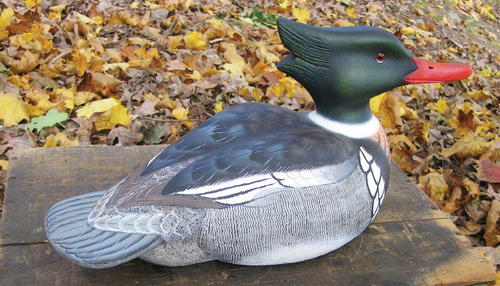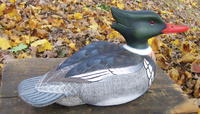Carving a Cork Red-Breasted Merganser, Part One
Cork, wood, and acrylics combine to make a great-looking decoy.

There are many ways to carve and finish a decoy. In these articles, I'll demonstrate the techniques I used to make a red-breasted merganser, but these techniques will work for any species. By the time you carve a few dozen decoys, you should be developing your own methods and style. The more you carve the more you improve.
Start with a pattern. The pattern is your decoy's blueprint. It should tell you everything you need to know to carve any particular species. You can find many great pattern books on the market. As a beginning carver, you'll probably want to follow your pattern fairly closely. Observe details such as how far apart the eyes are when you look at a duck's head straight on. They are not as far apart as you might think. Notice that the decoy's body is round, not square. Think of the body as an egg. Divide the egg in half lengthwise. The narrow end of the egg is the tail and the fatter end the chest. If the decoys body looks any different than this, you probably need to remove more wood.
This article is from the Spring 2011 issue. For more information on our issues, check out our issues page.
Read NextVintage Silhouette Shorebirds



